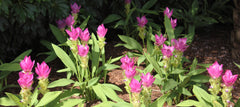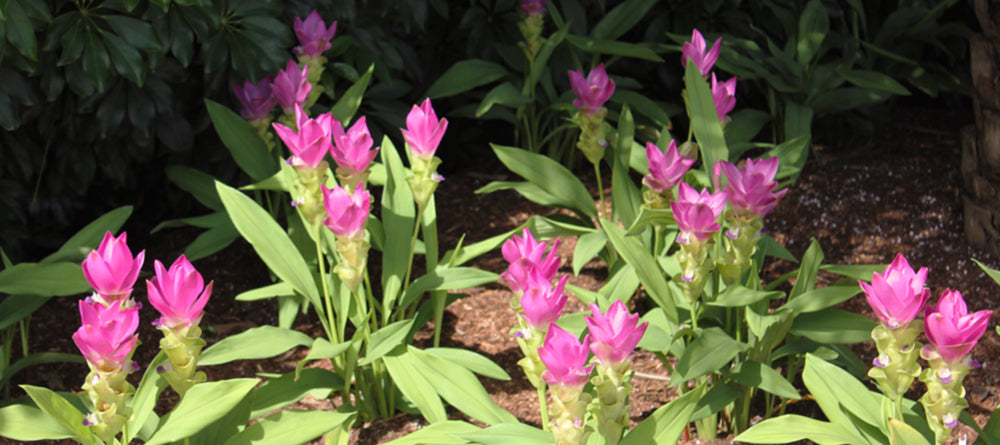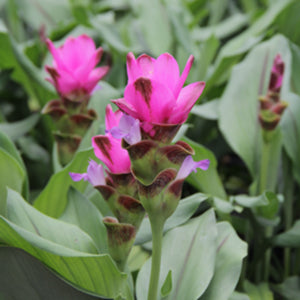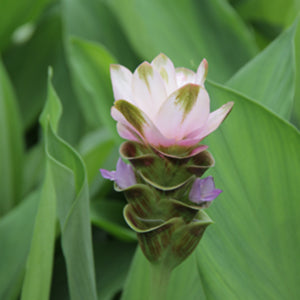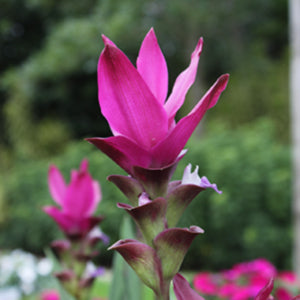Curcuma (Curcuma alismatifolia)
Curcuma Plant Features
Curcuma is a stately and elegant summer-blooming flower that's a lot easier to grow than it looks! This heat-loving, long-blooming tropical plant produces gorgeous spires of pink, purple, or white flowers all summer long. Curcuma makes an outstanding addition to garden beds and borders, as well as container gardens. Or use it as an eye-catching tabletop centerpiece on your deck or patio.This easy outdoor plant can be grown by itself, but also makes an excellent accent to blue salvia, euvolvulus, caladium, and other flowers. Curcuma is also a excellent for mixing with tropicals such as hibiscus and purple elephant's ears in container gardens.
A tropical plant, curcuma doesn't survive prolonged exposure to frosty or freezing temperatures. If you live in a cold-winter climate, it will not come back every year if planted in the ground (but you can store it in a frost-free place to protect it).
Curcuma Questions?
If you have questions about curcuma, just drop us an email. One of our gardening experts will get back to you!
Curcuma Growing Instructions
Grow curcuma in sun or shade. In full sun, especially in hot climates, it's helpful to keep curcuma moist. If your soil tends to dry out much, it's best to grow curcuma in partial shade. This summer-blooming flower holds up to dry conditions fairly well when its grown in the shade.Curcuma prefers moist, well-drained soil that has a lot of organic matter, such as compost, in it. If your soil has a high sand or clay content, add organic matter before planting for optimal performance from your plant. Water curcuma regularly if your area doesn't get much natural rain; it thrives with about an inch of moisture each week while it's actively growing.
Fertilize curcuma during spring and summer with any general-purpose fertilizer. Follow the directions on the packaging for application rates.
Prune curcuma in autumn, when the foliage dies back, to keep your garden looking fresh and tidy. Many gardeners like to deadhead, or remove the faded flowers, to keep their plants looking in tip-top shape. While removing old flowers makes the plant look better, it's not necessary. Curcuma grows and blooms just fine if it's not deadheaded.
Note: Curcuma is not intended for animal or human consumption.
-
Water
Medium water needs
-
Light
Outside: Part sun
Outside: Shade
Outside: Sun
-
Colors
Pink
Purple
White
-
Special Features
Deer/rabbit resistant
Super-easy to grow
